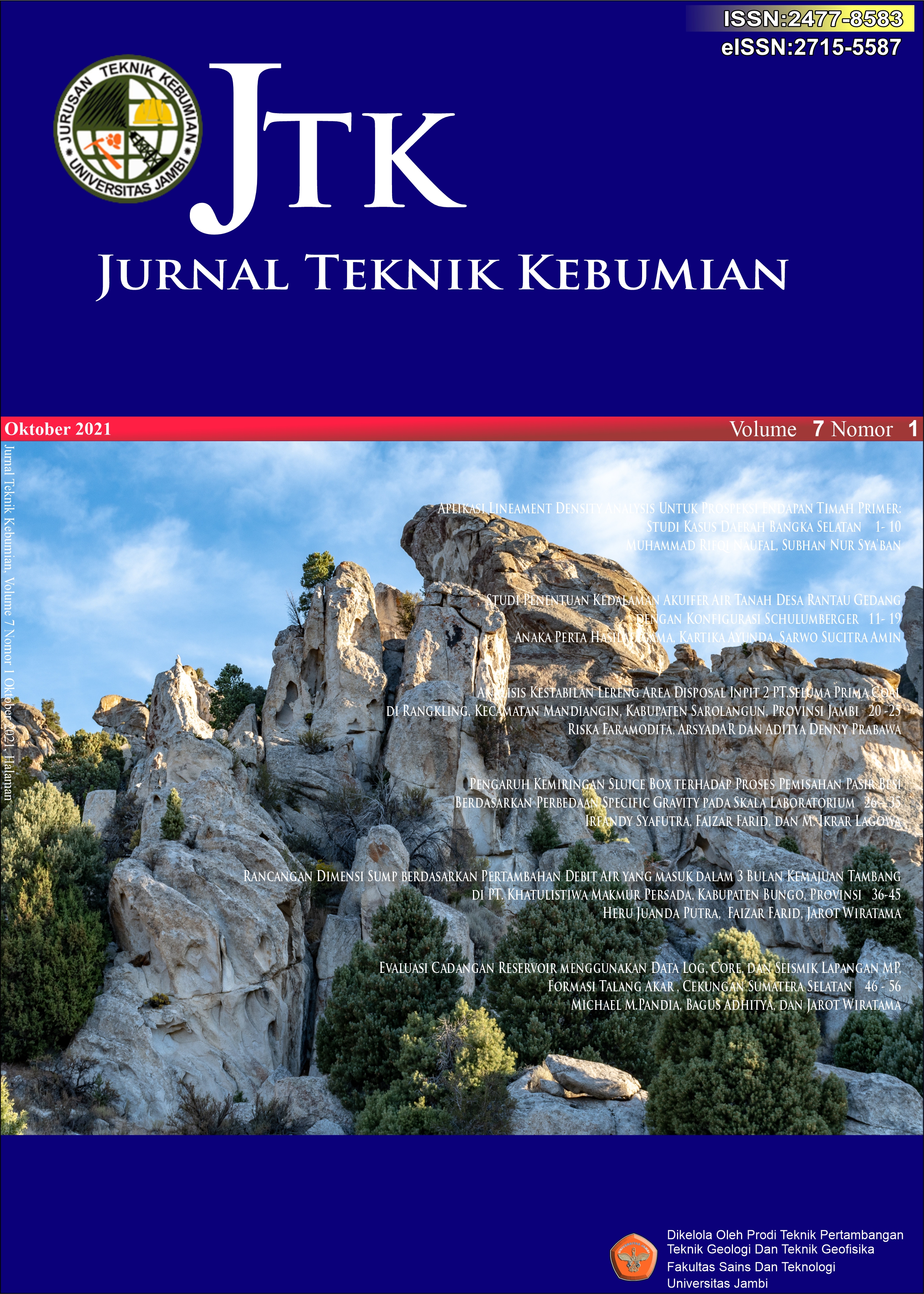Studi Penentuan Kedalaman Akuifer Air Tanah Desa Rantau Gedang dengan Konfigurasi
DOI:
https://doi.org/10.22437/jtk.v7i01.23069Abstract
This study aims to identify the depth of the groundwater aquifer and the thickness of the aquifer layer using the Schlumberger configuration resistivity geoelectric method. The data used in this study was obtained from field data collection (data acquisition) carried out in the Rantau Gedang Village area, Mersam District, Batanghari Regency, Jambi Province. The resistivity geoelectric method is one of the geophysical methods often used in exploration for the identification of subsurface groundwater aquifers. This method is carried out by conducting an electric current into the bowels of the earth and calculating the resistivity value of the rock when it is electrified. Groundwater aquifers are distinguished into 4 types. Rantau Gedang Village Area, Mersam District, Batanghari Regency, Jambi Province is one of the areas that has great aquifer potential. Data processing is carried out using IPI2Win and PROGRESS V3 software. The result of data processing is the value of resistivity and depth vertically in rock layers. The resistivity of the top soil zones of track 1 and 2 is 1.70-5.52 ohm.m, the resistivity of the free aquifer is 41.59-52.41 ohm.m, and the resistivity of a good aquifer is more 90.03-95.21 ohm.m. The depth of the top soil zone is 0-4.14 m, the depth of the free aquifer is 4.14 -31.65, and the depth of a good aquifer is 80.16-81.66 m. With an approximate thickness reaches 50 m
Downloads

Downloads
Published
How to Cite
Issue
Section
License

This work is licensed under a Creative Commons Attribution-NonCommercial-ShareAlike 4.0 International License.





